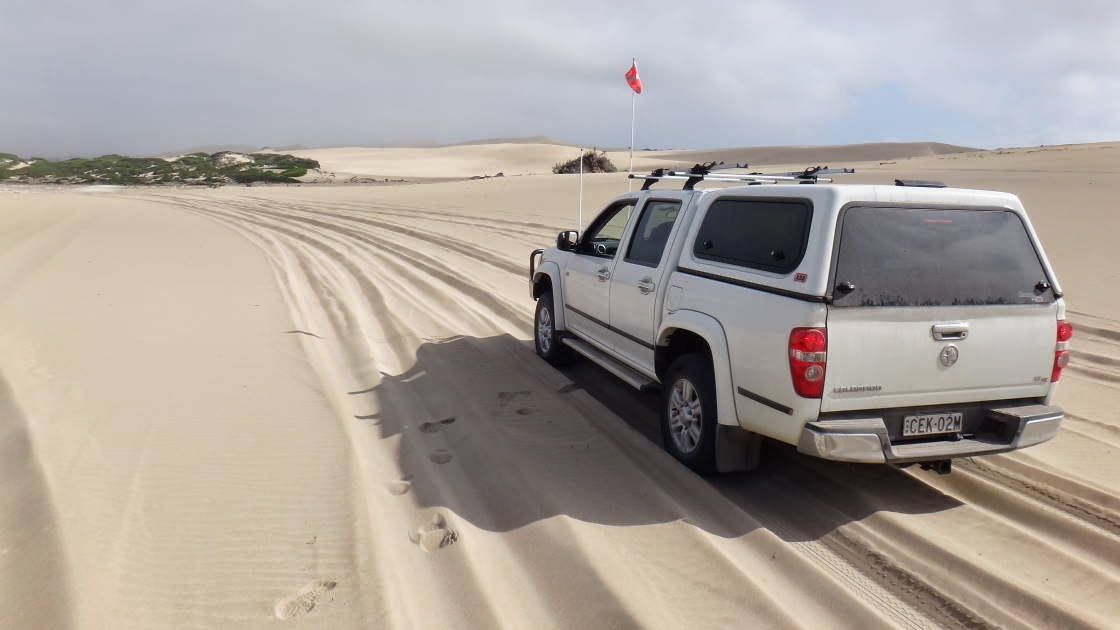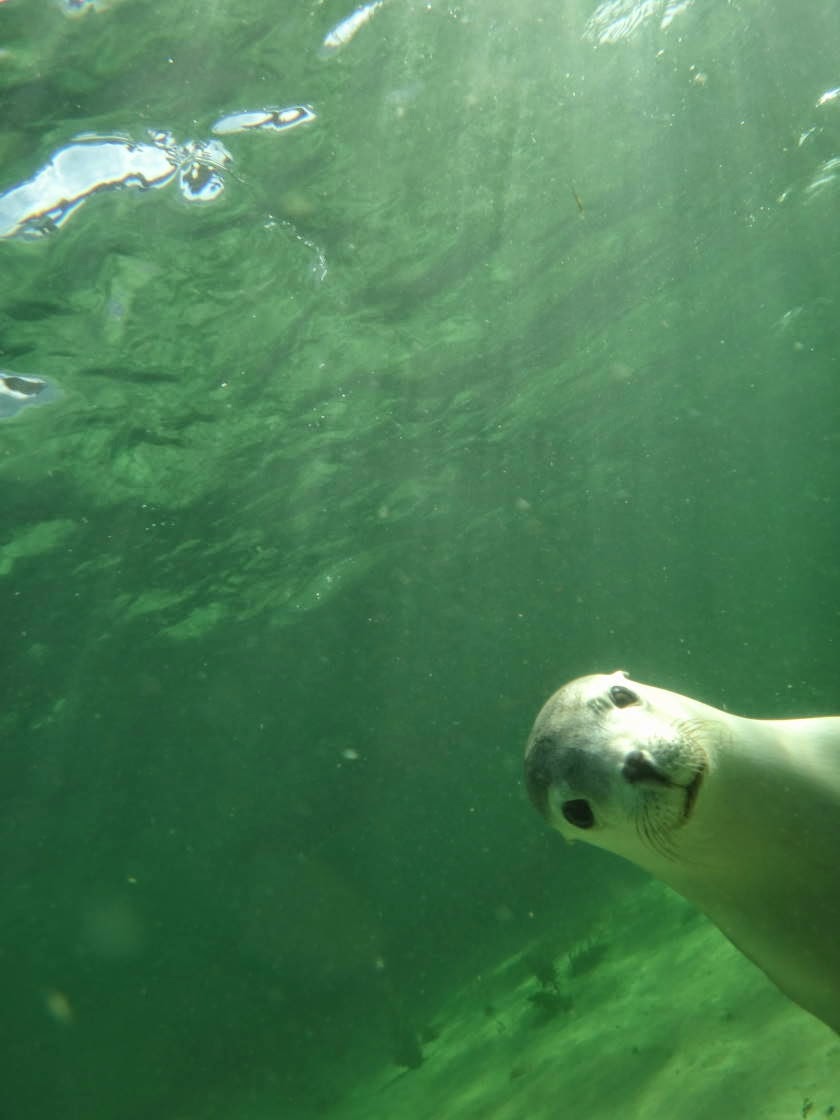Whyalla on the Spencer Gulf is a town built by BHP (now OneSteel) due to iron ore deposits found in 1899 at Iron Knob. The Steelworks are still active, producing structural steel and railway lines. The HMAS Whyalla was built in the local shipyard in 1942 and decommissioned in 1984. All very interesting...
... except that the town is covered in red dust and the water in the Spencer Gulf is not very tempting for swimming.
Once we arrived in Port Lincoln, things improved: a night in a fancy new hotel, excellent seafood and two National Parks nearby.
Port Lincoln is called the "Seafood Capital of Australia" and is reputed to have the most millionaires per capita in Australia. The fishing fleet is impressive!
Lincoln National Park boasts scenic coast lines, secluded bays, excellent fishing ...
... and great camping spots!
Some people catch so much fish, they can't eat it all. We received some King George Whiting caught two hours earlier. Delicious!!
Kirsten doesn't get to drive all the fun bits!
Note the size of these sand dunes with the car looking tiny! And totally white and soft!
The driving was not too challenging, except for one section, where of course I did not have the camera ready. When I asked Kirsten to drive through it again, she refused, saying "that was not pleasant".
There was no track, just a few red markers to indicate the direction to the other end of the 10 km long dune system.
Yangie Bay in Coffin Bay National Park. Apparently the name has nothing to do with dead people but a name of a friend of Matthew Flinder's who mapped this area in 1802.
Coffin Bay is a sleepy fishing and holiday village.
Below some of the coastline along the west coast of Eyre Peninsula.
The "Baird Bay Ocean Eco Experience" (www.bairdbay.com/) offer a trip to snorkel with dolphins and sea lions (in 16 degree water!). The dolphins seemed to enjoy playing in the wake of the boat more than to interact with the swimmers. The sea lions, however, loved the interaction. They are very cheeky and playful! What a fantastic wildlife experience!
By the way, the tour guide was wearing a shark shield - great white territory! But we survived.
I couldn't take a shot without him in it!
The coast has interesting rock formations due to porous limestone sitting on top of smooth sandstone. Here the Woolshed Cave...
.... the sea lion colony at Point Labatt, ...
.... and a fantastic snorkelling spot called "the Granites".
Streaky Bay was packed with grey fishing nomads (we were the youngest people in town, apart from the two German girls in the VW Van next to us, haha!). Apparently it's the best time of the year to catch King George Whiting.
On a quick detour to the Gawler Ranges National Park....
.. we climbed a lot of weird granite formations. Mt Wudinna is the second largest rock in Australia (after Uluru), i.e. a huge monolith. Pildappa Rock, a smaller version, below.
Murphy's Hay Stacks below.
The organ pipes in Gawler National Park formed as a result of volcanic eruptions more than 1500 million years ago. Some of them have now toppled over.




































No comments:
Post a Comment